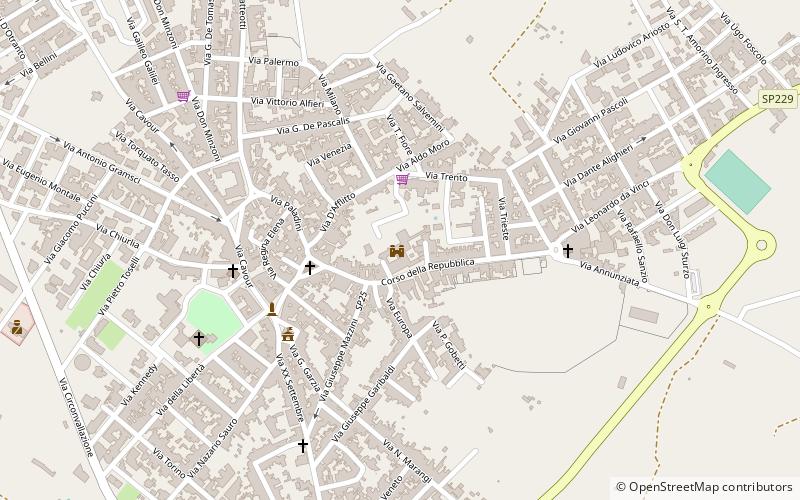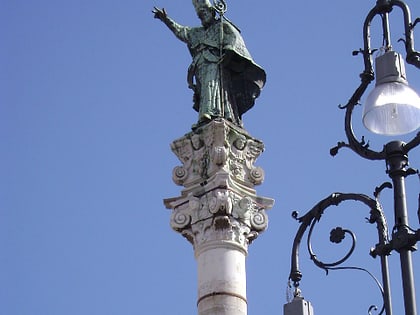Palazzo baronale di Lizzanello, Lizzanello


Facts and practical information
Also known as Paladini Palace, named after the feudal family that erected it, it is of fifteenth-century origin and was originally built as a castle. Modified for the first time in the 16th century, it was transformed into a stately residence by Giovanni Paladini in the 17th century. It underwent enrichments and modifications over the following centuries, particularly in the Neoclassical period.
Of the original structure, a tower in Lecce stone remains at the rear. The tower possesses a truncated-conical base and is developed with a cylindrical plan. The interior holds the coat of arms of the Paladins consisting of a shield divided into four parts, with two white lilies on a red body and two red lilies on a white body: the plaque is surmounted by a crest and rests on the Maltese cross. Also seventeenth-century is the circular dovecote tower set behind the palace. The late Renaissance architectural style of the palace, most likely built with the advice of Gian Giacomo dell'Acaya, was distorted in the late 19th century with the transformation of the facade and garden into the Neoclassical style. The elevation, which still retains its scarp base, is characterized by an austere alignment of large windows and a trapezoidal portal surmounted by the coat of arms of the Lotti family, the last feudal lords of Lizzanello. Nothing remains of the many works of art that made the building luxurious as they were sold to private individuals or transferred to the Lotti's Neapolitan palace in Naples. Even the interior chapels of the Annunziata and San Salvatore, later named after St. Gregory, no longer exist. However, an underground oil mill and a casemate tower equipped with petriere and saettiere remain.
Lizzanello
Palazzo baronale di Lizzanello – popular in the area (distance from the attraction)
Nearby attractions include: Stadio Via del Mare, Castle of Charles V, Museo Sigismondo Castromediano, St. Matthew Church.











